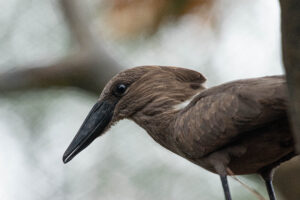About the Exhibit
Our newest exhibit, Birds of the World, is now open, and features three spacious aviaries, highlighting birds from the following regions:
- The African Savanna aviary highlights majestic, grey crowned cranes, vultures, hamerkops, and more.
- The North American Woodlands exhibit features a variety of American songbirds including blue grosbeaks and indigo buntings, helping connect visitors to the beautiful birds in their own backyard.
- The South American Wetlands habitat is an immersive aviary, giving guests the chance to walk among spectacular variety of South American birds including a perennial favorite, Chilean flamingos.
This exhibit is included with general admission and is free for members.
As a Zoo member, you can get extra general admission tickets not covered by your membership at a discounted price when you log in to the Member Portal.
Saving Birds in the Wild
Birds from all over the world travel through Houston during their migration. Houston is on an international route for migrating birds. A billion birds fly through our night skies each migration season. Bright lights can cause confusion and collision with windows. One small way to help keep migrating birds safe is to turn out lights from 11:00 p.m. to 6:00 a.m. during bird migration season.
Houston Zoo helps save birds locally and internationally. Native birds are protected by law, and when rescued from the illegal pet trade, they need a safe place to stay. The Houston Zoo partners with U.S. Fish and Wildlife Service to house these birds. The Zoo also cares for birds that have been injured and cannot be returned to the wild. At the Zoo, each cup of coffee helps protect wild birds by serving bird-friendly coffee. Bird Friendly® certified coffee is grown in a way to preserve the habitats of birds and other animals in South America and beyond.
Abroad, in Rwanda, cranes are kept inappropriately as pets, causing wild flocks to decline. Houston Zoo’s conservation partners encourage the return of these birds for rehabilitation and rewilding. With the Zoo’s support, hundreds of cranes have been restored to the wild. A portion of each Zoo membership and ticket helps support the Zoo’s bird-saving initiatives.
Birds to See Here

Keeping Our World Wild Centennial Campaign
The Houston Zoo announced its Keeping Our World Wild Centennial Capital campaign in 2018, in celebration of its 100-year anniversary in 2022. With the funds raised from the campaign, the Zoo has opened the Hamill Foundation Black Bear Exhibit (2018), Cypress Circle Café (2018), a renovated orangutan exhibit (2019), and award-winning exhibits Kathrine G. McGovern Texas Wetlands (2019), South America’s Pantanal (2020), and Galápagos Islands (2023). The final animal exhibit of the campaign, Birds of the World, will open August 30, 2024.

KPRC Special: "Saving Wildlife: Return to Rwanda"
Earlier this year, our Houston Zoo team traveled with our friends at KPRC-2 to visit our wildlife-saving partners, including Dr. Olivier Nsengimana who works to save the grey crowned crane and founded the Rwanda Wildlife Conservation Association. We also trekked with Gorilla Doctors to see mountain gorillas in the wild! Stay tuned for KPRC-2’s upcoming special airing around Labor Day weekend.



















